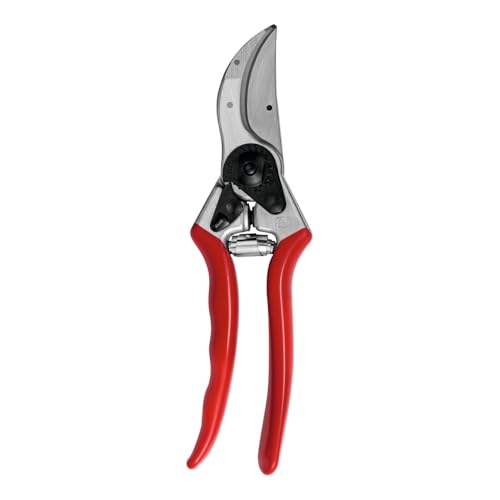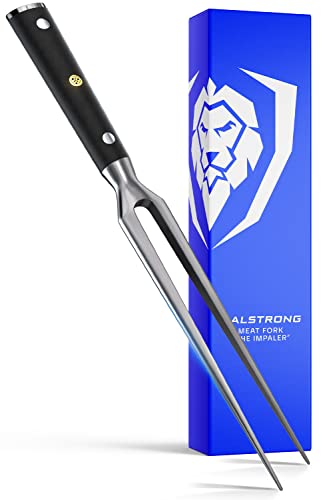




The broom bush, also known as Cytisus scoparius, is a resilient and attractive shrub that adds beauty to any garden or landscape. Native to Europe, this plant is known for its vibrant yellow flowers and delicate foliage. With proper care, the broom bush can thrive for many years, providing a stunning display of color.
To ensure the health and vitality of your broom bush, it is important to provide it with the right growing conditions. This shrub prefers full sun to partial shade and well-drained soil. When planting your broom bush, be sure to choose a location that meets these requirements. Additionally, it is recommended to plant the broom bush in the spring or fall, when the temperatures are mild.
Regular watering is essential for the broom bush, especially during the hot summer months. While this shrub is drought-tolerant, it will benefit from a deep watering at least once a week. Be sure to water the base of the plant, avoiding the foliage as much as possible. Mulching around the broom bush can help retain moisture and suppress weeds, ensuring the plant stays healthy.
Pruning is an important part of caring for the broom bush. This shrub has a tendency to become leggy if left untrimmed, so regular pruning is necessary to maintain its shape and promote healthy growth. Prune your broom bush in the spring, right after it has finished flowering. Remove any dead or diseased branches, as well as any growth that is crossing or rubbing against other branches. Lightly shaping the broom bush can also help improve its overall appearance.
Understanding Broom Bush
Broom bush, also known as Cytisus scoparius, is a deciduous shrub that belongs to the Fabaceae family. This bush is native to Europe and is widely cultivated in gardens and landscapes for its vibrant yellow flowers and unique foliage.
The broom bush grows best in well-drained soil and requires full sunlight to thrive. It can tolerate a wide range of soil types, including sandy, loamy, or clay soils. However, it prefers slightly acidic to neutral soil conditions.
One of the key characteristics of the broom bush is its ability to fix nitrogen in the soil. This means that it can take atmospheric nitrogen and convert it into a form that can be used by other plants. As a result, broom bush is often used in gardens as a natural fertilizer.
The broom bush has slender, green stems with small, narrow leaves that are typically arranged in groups of three. During the spring and summer months, the bush produces an abundance of bright yellow flowers that attract pollinators such as bees and butterflies.
It is important to note that broom bush has invasive tendencies and can quickly spread if not properly maintained. Regular pruning and removal of seed pods can help control its growth. It is recommended to consult local regulations and guidelines before planting broom bush in certain areas.
In conclusion, understanding the characteristics of broom bush is essential for its proper care and maintenance. By providing the correct growing conditions and managing its invasive tendencies, you can enjoy the beauty of this vibrant shrub in your garden.
Essential Care Tips
Proper care is essential for maintaining the health and beauty of your broom bush. Here are some important tips to keep in mind:
1. Sunlight
Broom bushes thrive in full sunlight, so make sure to place them in a spot where they can receive at least six hours of direct sunlight every day. Lack of sunlight can result in weak growth and fewer flowers.
2. Watering
Proper watering is crucial for the broom bush. Water the plant deeply and thoroughly, allowing the soil to dry out slightly between waterings. Overwatering can lead to root rot and other fungal diseases.
3. Pruning
Regular pruning helps maintain the shape and size of the broom bush. Prune the plant immediately after flowering, cutting back any dead or damaged branches. This will promote healthy growth and encourage the development of more flowers.
4. Fertilizing
Feed your broom bush with a balanced, slow-release fertilizer in the early spring. Follow the instructions on the fertilizer package for the correct dosage and application method. Avoid over-fertilizing, as it can cause excessive foliage growth at the expense of flowers.
5. Mulching
Applying a layer of mulch around the base of the broom bush helps conserve soil moisture and suppresses weed growth. Use organic mulch, such as wood chips or straw, and apply it in a 2-3 inch layer. Avoid piling mulch against the plant’s stem, as it can cause rot.
Following these care tips will ensure the overall health and vitality of your broom bush, allowing it to thrive and provide you with beautiful blooms for years to come.
Planting Broom Bush
Planting a broom bush (Cytisus scoparius) can be a rewarding experience. Whether you are planting broom from seeds or from a young sapling, following these steps will help ensure the success of your broom bush and promote healthy growth.
Choosing the Right Location
When selecting a location for your broom bush, it is important to consider its natural habitat. Broom bushes prefer well-draining soil and full sunlight, so choose a spot that receives at least six to eight hours of direct sunlight per day. Avoid planting your broom bush in low-lying areas that are prone to waterlogging.
Preparing the Soil
Prepare the soil before planting the broom bush. Loosen the soil using a garden fork or tiller to a depth of 12 inches. Remove any rocks, roots, or debris that may impede the growth of the broom bush. Incorporate organic matter, such as compost or well-rotted manure, into the soil to improve its fertility and drainage.
Planting the Broom Bush
Follow these steps to plant the broom bush:
- Dig a hole twice the width and the same depth as the root ball of the broom bush.
- Gently remove the broom bush from its container or the packaging material, being careful not to damage the roots.
- Place the broom bush in the hole, ensuring that the top of the root ball is level with the surrounding soil.
- Backfill the hole with soil, firming it gently around the roots to eliminate any air pockets.
- Water the broom bush thoroughly after planting to settle the soil and provide moisture.
After planting, apply a layer of mulch around the base of the broom bush to help retain moisture and suppress weeds. Avoid placing the mulch directly against the stem of the broom bush to prevent rot.
Regularly water the broom bush, especially during dry spells, to keep the soil moist but not waterlogged. Do not overwater as excessive moisture can lead to root rot. Prune the broom bush annually to maintain its shape, remove dead or damaged branches, and promote a bushier growth.
With proper care, your broom bush will thrive and provide a beautiful display of vibrant yellow blooms. Enjoy the beauty and fragrance of this lovely plant in your garden!
Watering and Fertilizing
Proper watering and fertilizing are essential for the health and growth of broom bush plants. Here are some guidelines to follow:
Watering
Water broom bush plants regularly, especially during dry periods. They require well-drained soil, so make sure the water doesn’t accumulate around the roots. It’s best to water deeply and thoroughly, allowing the soil to dry out slightly between waterings. This promotes healthy root development and prevents root rot.
Fertilizing
Broom bush plants benefit from regular fertilization to ensure proper growth and blooming. Use a balanced, slow-release fertilizer that is specifically formulated for flowering shrubs. Follow the manufacturer’s instructions for application rates and frequency. In general, it’s best to fertilize broom bush plants in early spring before new growth emerges. Avoid over-fertilizing, as this can lead to excessive foliage growth at the expense of flower production.
It’s also important to monitor the plant’s response to fertilization. If you notice yellowing leaves or signs of nutrient deficiency, adjust the fertilization schedule accordingly. Always water the plants thoroughly after applying fertilizer to prevent root burn.
Remember, every plant is different, so it’s important to observe your broom bush plants closely and make adjustments to the watering and fertilizing routine as needed. With proper care, your broom bush plants will reward you with their beautiful blooms and vibrant foliage.
| Watering Tips | Fertilizing Tips |
|---|---|
| Water deeply and thoroughly, allowing soil to dry out slightly between waterings. | Use a balanced, slow-release fertilizer formulated for flowering shrubs. |
| Avoid overwatering to prevent root rot. | Follow manufacturer’s instructions for application rates and frequency. |
| Monitor the plant’s response to watering and adjust as needed. | Fertilize in early spring before new growth emerges. |
| Ensure water doesn’t accumulate around the roots. | Avoid over-fertilizing to prevent excessive foliage growth. |
| Water thoroughly after applying fertilizer. | Adjust fertilization schedule if nutrient deficiency occurs. |
Pruning and Maintenance
Proper pruning and maintenance are crucial for the health and appearance of your broom bush. Follow these guidelines to ensure your plant thrives:
1. Timing is Key
Prune your broom bush in late winter or early spring before the new growth begins. This will encourage healthy development and prevent damage to delicate new shoots.
2. Remove Dead or Damaged Branches
Regularly inspect your broom bush for dead or damaged branches and remove them promptly. This will not only improve the overall appearance but also prevent potential diseases from spreading.
To remove a branch, use a sharp pruning shears and make a clean cut just above the branch collar, without leaving a stub.
3. Shape and Size Control
If you want to maintain a specific shape or size for your broom bush, prune it accordingly. Use pruning shears to trim the new growth to the desired length.
When trimming, make the cut at a slight angle just above an outward-facing bud or side branch. This will encourage outward growth and give your broom bush a well-groomed appearance.
Keep in mind that broom bushes can tolerate heavy pruning, so don’t be afraid to be more aggressive if necessary.
Regularly pruning your broom bush will help maintain its shape and promote healthy growth.
4. Cleaning and Maintenance
Remove any fallen leaves or debris around the base of the broom bush to prevent the risk of pests or diseases. Gently wipe the leaves with a damp cloth to keep them free of dust and increase their ability to photosynthesize.
Inspect the plant regularly for any signs of pests or diseases, such as discolored or wilting leaves. If any issues are detected, take appropriate measures to address them.
Remember to water your broom bush regularly, especially during dry spells, and provide it with sufficient sunlight to ensure healthy growth.
By following these pruning and maintenance tips, your broom bush will remain healthy, vibrant, and aesthetically pleasing.
Pruning Techniques for Broom Bush
Pruning is an important part of caring for a broom bush. Proper pruning helps to maintain the health and shape of the plant, promote flowering, and prevent the bush from becoming overgrown. Here are some pruning techniques to keep in mind:
1. Timing
The best time to prune a broom bush is in late winter or early spring, before new growth begins. This allows for new shoots to emerge and flower during the growing season.
2. Tools
Use sharp, clean pruning shears or loppers to make clean cuts. Dull or dirty tools can damage the plant and increase the risk of disease. Ensure the tools are properly sterilized to prevent the spread of any potential infections.
3. Remove Dead or Diseased Branches
Start by removing any dead or diseased branches. These branches can be identified by their lack of leaves, discoloration, or areas of decay. Removing them improves the overall health of the bush and reduces the risk of further damage.
4. Thin Out Overgrown Branches
If the broom bush has become overgrown or crowded, thin out some of the branches. This helps to improve air circulation and light penetration within the plant, leading to better flowering and overall health.
5. Shape the Bush
To shape the broom bush, selectively prune branches to achieve the desired form. This can be done by cutting back the tips or selectively removing branches. Take care to maintain a balanced shape and avoid cutting into the main framework of the bush.
6. Prune After Flowering
For broom bushes that flower in late spring or early summer, prune them after they have finished blooming. This promotes new growth and encourages further flowering in the following season.
Following these pruning techniques will help keep your broom bush healthy, vigorous, and attractive. Remember to step back and evaluate the bush’s overall shape and structure as you prune, and make adjustments as needed. With proper care and pruning, your broom bush will thrive and provide beautiful blooms year after year.
Pest and Disease Control
To keep your broom bush healthy and thriving, it’s important to be aware of common pests and diseases that may affect it. Here are some tips on how to control and prevent these issues:
1. Aphids: These small insects feed on the sap of the broom bush, causing curling leaves and stunted growth. To control aphids, you can spray the plant with a mixture of water and dish soap, or use a commercially available insecticidal soap.
2. Spider mites: Spider mites are microscopic pests that suck the sap from the leaves, causing yellowing and tiny webs. To combat spider mites, regularly mist the plant with water to increase humidity, and consider introducing natural predators like ladybugs to control their population.
3. Powdery mildew: This fungal disease appears as a white, powdery coating on the leaves and stems. To prevent powdery mildew, ensure good air circulation around the plant and avoid overhead watering. If the disease does occur, you can treat it with a fungicide specifically formulated for powdery mildew.
4. Root rot: Overwatering or poor drainage can lead to root rot, which causes the roots to become mushy and eventually die. To prevent root rot, make sure the soil is well-draining, and avoid overwatering. If root rot is present, consider repotting the plant in fresh, well-draining soil to save it.
5. Pruning and maintenance: Regular pruning of dead and damaged branches will help prevent the spread of pests and diseases. Additionally, make sure to clean your pruning tools with alcohol or a diluted bleach solution between uses to avoid cross-contamination.
By following these pest and disease control measures, you can ensure the health and longevity of your broom bush, allowing it to thrive in your garden for years to come.






